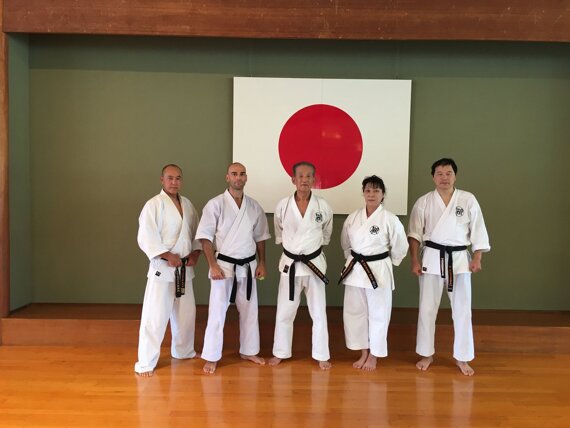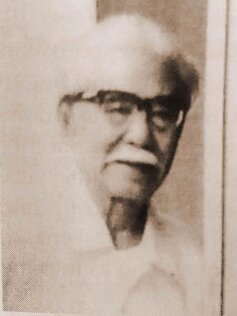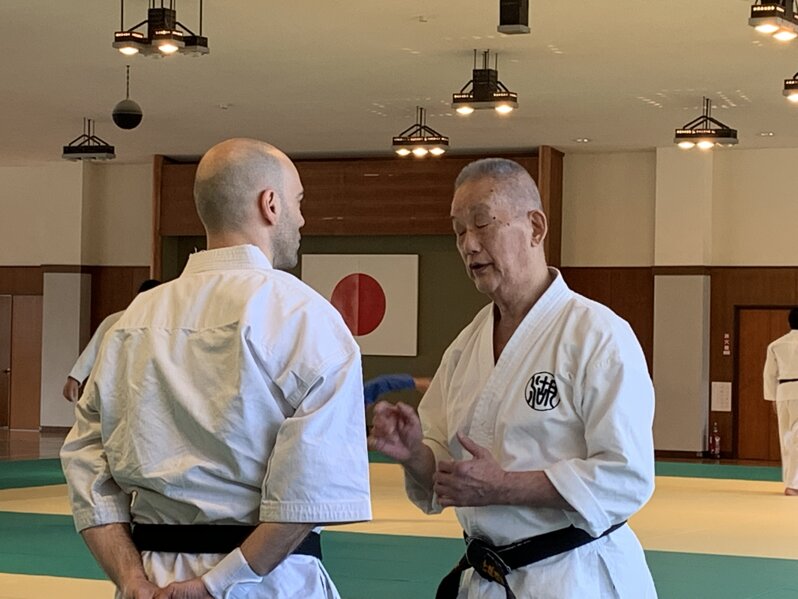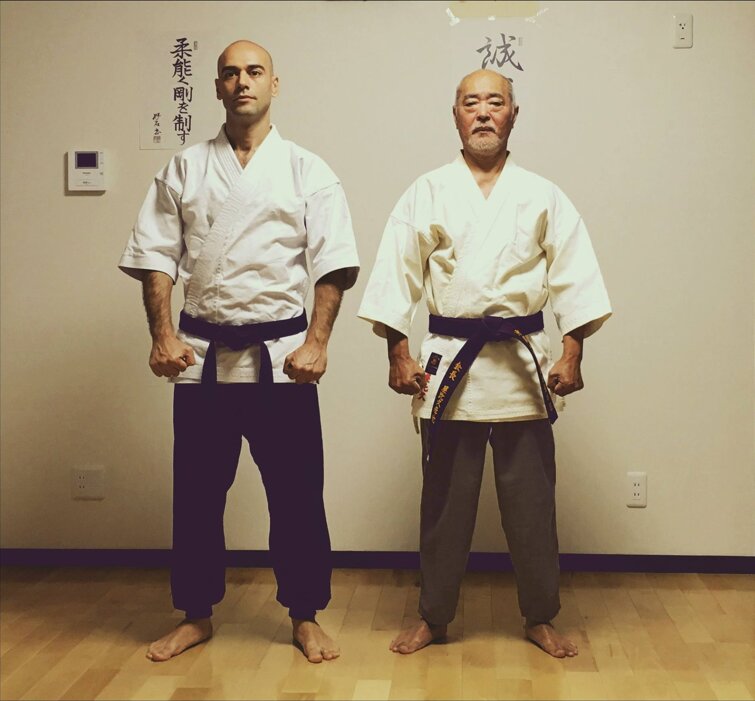Yoshifumi HAYASAKA - Kingairyu
© TAIGISHIN-KAN
TAIGISHIN-KAN®

THE GHOST STYLE OF OKINAWA
KOJO-RYU
Kojoryu is called "the ghost style of Okinawa" because it's an old-style system that, until the late 1960s, was passed down in secret only to members of the Kojo family.
Only in the late 1970s did Kafu Kojo and his son Shigeru open a public dojo in Naha, but it was short-lived due to their untimely passing. The style thus remained unknown in its entirety to most. Today its tradition is preserved by Kojo's longest-serving student, Shingo Hayashi, considered the moral heir of the last headmaster.
2nd Patriarch
1st Patriarch
1st Headmaster
Cai Zhaogong or Cai Zonghui [Kojo Uekata 1656 – 1737 or 1665 – 1747], of the Chinese community living in the Kume village in Okinawa. He was a uekata of the Ryukyu royal court and he also studied in Beijin.
Kojo Shinunjo (Cai Shichang 1780 - 1860), probably a grandson of Cai Zhaogong. He was a pechin of the Ryukyu royal court and a guard at Shuri Castle, and he also studied in Fujian.
Kojo Shinpo (Chinese name and date of birth not received, probably death 1826). He studied Bingfa, Caijia-quan and Chinese Calligraphy and he worked for the Ryukyu royal court as a pechin.
3rd Headmaster
4th Headmaster
2nd Headmaster
Kojo Tatei (1837 – 1917), Shoi's grandson. He furthered his studies in China, under the Chinese warriors Iwah and Wangshi'an. Tatei introduced the Babulian kata to Okinawa and all the White Crane Fist and Monk Fist kata into the family system. Tatei was also the first to give the family fighting method a name, beginning to call it Shinzan-ryu kenpo.
Kojo Kaho (1849 – 1925) imported the three intermediate kata Tenkan, Kukan and Chikan into the family style. He also created the two typical jo-jutsu kata, and began to fuse the family chuan-fa with indigenous Okinawan fighting techniques.
Kojo Shoi (Cai Changwei 1816 – 1906) also studied the White Crane Fist in Fujian, as well as jo-jutsu and tanto-jutsu. Shoi incorporated into the family style the three advanced kata Hakko, Hakuryu, and Hakkaku.
6th Headmaster
5th Headmaster

Kojo Saikyo (1873 – 1941), Kaho's grandson, studied other styles of Okinawan karate, as well as the local sumo form and sai-jutsu, introducing elements of all these disciplines into the family style.
Kojo Kafu (1910–1996), Saikyo's son, was the last headmaster and the one who further and definitively implemented the method. He also furthered his studies under his grandfather and uncle, and he studied other disciplines such as Sekiguchi-ryu Jujutsu and Jukendo. Kafu was also an expert in Shorin-ryu, having studied under Hanashiro Chomo and his friend Choshin Chibana. In the late 1960s Kafu decided to break with family tradition and open a public dojo together with his son Shigeru. He called the family karate as Kojo-ryu karate.
7th Generation of Kojo-ryu
One of the very few students outside the family, and one of the most trusted, was Shingo Hayashi (1934), who is today considered Kafu's moral heir, and the only student authorized to open a Shibu-dojo. Hayashi Sensei worked as a dentist. He began practicing Kojo-ryu in 1963 and today lives in mainland Japan, where he teaches only three trusted students, far from federal or association politics, passing on in the old-fashioned way what his Sensei taught him, so much so that he is known as kakuri bushi, or "hidden warrior." Prof Bonanno started to study under Hayashi Sensei in 2016.

Outside lineage of Kojo-ryu

Yabiku Takaya (1944) was unique student of Seiji Irimaji, that was the first soto-deshi of the Kojo dojo in Naha. Yabiku Sensei started Kojo-ryu practicing White Crane Fist, in 1965 for about a year and a half, under Shigeru and Tatsumi Kojo (another son of Kafu) who worked in the same taxi society. Later he passed under the training of Irimaji continuing for twenty-four years, until Irimaji himself promoted him to 10th dan and successor of his own school, called Shinzan-ryu Koshinkan *.
Prof Bonanno started to study under Yabiku Sensei in 2014.
__
* Some schools in USA claim to practice Kojoryu as transmitted by Takaya Yabiku in an authentic way. As verifiable by historical facts and technical details, all confirmed to Prof. Bonanno by Yabiku Sensei during his travels to Okinawa and in correspondence in the possession of Prof Bonanno himself, these schools and their teachers practice Koshinryu and not Kojoryu.
Koshinryu, in fact, is the karate line founded by Seiji Irimaji when he decided to break away from the school of his teacher Kafu Kojo to open his own school called Koshinryu Koshinkan, and he modified the original kata by expanding the syllabus with forms invented by himself. It is well known that Kafu Kojo did not look favorably upon this decision of Irimaji Sensei.
At first, Irimaji Sensei left his Koshinkan in Yabiku Sensei's hands, due to job reasons and then health problems, but in 2013 he decided to abandon the transmission of Koshinryu, and He asked Yabiku Sensei to teach the old Kojoryu only to trusted students; thus Yabiku created the Shinzanryu Koshinkan school (the year before Prof Bonanno began studying under him).
Therefore, Koshinryu is not the authentic Kojoryu.